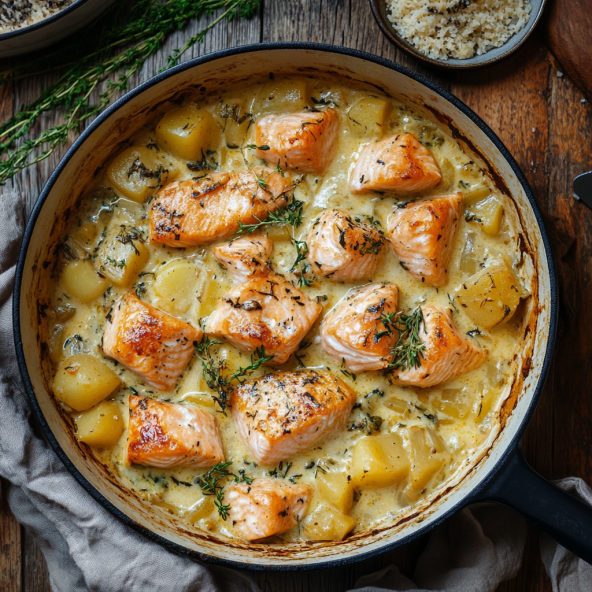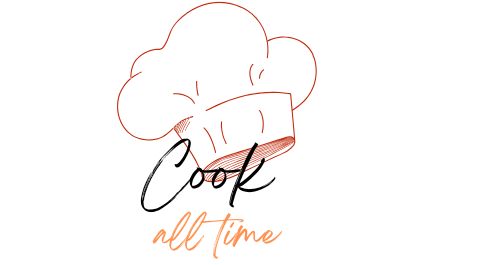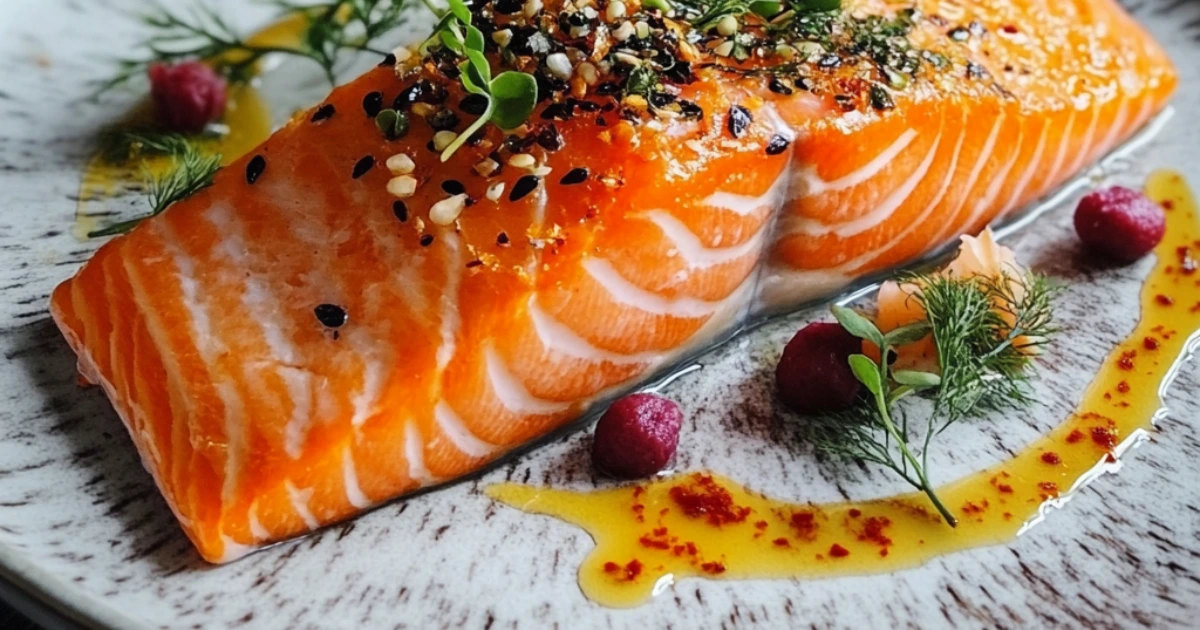Faroe Island Salmon – A Prized Culinary Delight
Faroe Island salmon is widely recognized as a luxury seafood, renowned for its flavor, texture, and sustainable farming practices. Nestled within the pristine waters of the North Atlantic, this salmon has become a staple in gourmet kitchens worldwide. Moreover, its exceptional quality stems from the unique environment and stringent farming techniques employed in the Faroe Islands.
With increasing awareness about sustainability and the demand for high-quality seafood, Faroe salmon has cemented its place as a preferred choice for both chefs and home cooks. Below, we explore the unique characteristics, benefits, and culinary versatility of this prized salmon.
Table of Contents
Introduction
The Faroe Islands, located between Iceland and Norway, are known for their rugged landscapes and thriving marine ecosystems. These islands offer an unparalleled setting for salmon farming, combining pristine waters with a focus on environmental preservation.
Unlike mass-produced alternatives, Faroe salmon boasts a buttery texture and rich flavor, making it a sought-after ingredient. Its quality is maintained through ethical practices, including low-density farming and natural diets.
As a testament to its excellence, chefs across the globe incorporate this salmon into a variety of dishes, ranging from sashimi to grilled fillets. Additionally, the region’s strong commitment to sustainability ensures a product that aligns with eco-conscious values, thereby benefiting both consumers and the planet alike.
The Unique Environment of the Faroe Islands
The Faroe Islands provide a natural haven for salmon farming. Key environmental factors contribute to the exceptional quality of Faroe Island salmon:
- Crystal-clear waters, untouched by industrial pollution.
- Strong ocean currents that encourage active fish, resulting in firmer flesh.
- Cool and stable temperatures, ideal for salmon growth.
These conditions mirror a wild habitat, allowing the salmon to thrive while maintaining a consistent quality. The unique geography of the islands minimizes environmental contamination, ensuring that the salmon is free from harmful substances.
This environment not only enhances the salmon’s flavor and texture but also supports the sustainability of the farming process. The synergy between nature and farming makes the Faroe Islands a global leader in high-quality seafood production.
Sustainability and Ethical Farming Practices
Sustainability is at the core of salmon farming, setting it apart from conventional practices. Furthermore, farmers follow rigorous standards to ensure minimal environmental impact. For example, key sustainable measures include:
- Low stocking densities to reduce stress and prevent disease outbreaks.
- No use of antibiotics or artificial growth hormones.
- Eco-friendly feed, often sourced from natural and renewable ingredients.
Ethical farming practices not only benefit the environment but also guarantee a healthier product. For example, salmon are handled humanely throughout their lifecycle, ensuring their well-being.
Additionally, the Faroe Islands implement strict regulations to monitor water quality and fish health, solidifying their reputation as pioneers in sustainable aquaculture. This dedication allows consumers to enjoy Faroe Island guilt-free, knowing it is produced responsibly.
Nutritional Benefits
Faroe Island salmon is not only a delight for the palate but also a nutritional powerhouse. It is rich in essential nutrients, making it an excellent choice for health-conscious individuals. Key benefits include:
- High omega-3 fatty acids, which support heart health and brain function.
- A significant source of protein, essential for muscle repair and growth.
- Packed with vitamins B12 and D, contributing to energy production and immune health.
Compared to other types of salmon, the nutritional profile of Faroe salmon is superior due to its natural diet and clean environment. Regular consumption can help lower inflammation, improve cholesterol levels, and enhance overall well-being.
For those seeking both taste and health benefits, Faroe Island salmon offers the perfect balance.
Did you know? Smoked turkey tails and other smoked meats can complement the robust flavors of island salmon. Discover more about smoked turkey tails recipes.
Culinary Uses of Faroe Island Salmon
The versatility of Faroe Island salmon makes it a favorite choice for both chefs and home cooks. Moreover, its mild yet rich flavor enables it to adapt effortlessly to a variety of cuisines. For instance, some popular culinary uses include:
- Grilled salmon: Seasoned simply with olive oil, salt, and herbs.
- Smoked salmon: Perfect for bagels, salads, or appetizers.
- Raw dishes: Used in sashimi, nigiri, and ceviche.
Its firm texture holds up well in different cooking methods, whether baked, pan-seared, or poached. Pairing it with complementary ingredients such as citrus, dill, or cream sauces can further enhance its flavor.
Regardless of how it is prepared, Faroe Island salmon elevates meals, making it a staple for special occasions and everyday dishes alike.
How Faroe Island Salmon is Raised
The farming process of Faroe Island salmon is a model of innovation and sustainability. Farmers prioritize:
- Low-density pens to provide ample space for the fish.
- Regular health checks to prevent disease without antibiotics.
- A natural diet, free from GMOs and synthetic additives.
This meticulous approach ensures that the salmon are healthy, stress-free, and flavorful. The use of advanced monitoring technology allows farmers to track water quality and fish behavior, maintaining optimal conditions.
Unlike many other farmed fish, Faroe Island salmon is raised with care, ensuring consistency in quality and taste. This commitment to excellence sets it apart in the seafood market.
Faroe Island Salmon vs. Wild-Caught Salmon
While both wild-caught salmon and Faroe Island salmon have their merits, there are notable differences:
- Consistency: Farmed salmon from the Faroe Islands offers year-round availability and uniform quality, unlike seasonal wild-caught salmon.
- Sustainability: Wild stocks face overfishing challenges, while Faroe Island farming practices are eco-friendly.
- Flavor profile: Faroe salmon has a milder, buttery taste compared to the often stronger flavor of wild salmon.
Ultimately, choosing between the two depends on personal preferences and priorities. However, Faroe Island salmon provides a reliable, sustainable option without compromising on taste or quality.
Buying Faroe Island Salmon: What to Look For
When buying Faroe salmon, it’s crucial to focus on quality and freshness. This premium seafood is renowned for its buttery texture and rich flavor, making it a sought-after choice in kitchens worldwide.
Key things to look for:
- Color: Opt for a vibrant pink hue, as dull coloring might indicate poor quality.
- Smell: Fresh salmon should have a mild, oceanic aroma, not a fishy or sour scent.
- Texture: Look for firm, moist flesh without any signs of discoloration or sliminess.
- Certifications: Check for sustainable farming labels like ASC (Aquaculture Stewardship Council) or Global GAP.
Selecting high-quality salmon ensures you enjoy the full nutritional and culinary benefits. Additionally, it’s wise to purchase from reputable sellers who prioritize sustainable sourcing.
The Economic Impact of Faroe Island Salmon Farming
The Faroe Islands maintain a robust economy, primarily because of their thriving salmon farming industry. In addition, this sector plays a pivotal role in creating local jobs, enhancing exports, and fostering strong global trade relations.
Key contributions to the economy:
- Employment: Salmon farming supports thousands of jobs, from fish farming to processing and export logistics.
- Global exports: Faroe Island is shipped to international markets, contributing to the country’s GDP.
- Sustainability-driven profits: The focus on ethical practices appeals to environmentally conscious consumers, ensuring long-term market viability.
The economic impact of this industry extends beyond the Faroe Islands, as it plays a significant role in influencing global aquaculture standards. Furthermore, with the rising demand for sustainably farmed seafood, the economic footprint of Faroe Island salmon is expected to grow steadily.
Cooking Tips
Cooking Faroe Island salmon to perfection enhances its natural flavor and succulent texture. This versatile fish can adapt to a variety of cooking techniques, from grilling to roasting.

Essential tips for cooking:
- Don’t overcook: Salmon is best when cooked until just opaque in the center. Overcooking can make it dry.
- Season lightly: Use olive oil, salt, and fresh herbs to let the salmon’s flavor shine.
- Use high heat: Searing salmon at high heat locks in moisture and creates a crispy exterior.
- Try poaching: For a delicate flavor, poach salmon in broth or wine with aromatics.
Pairing salmon with sides like roasted vegetables or lemon-infused sauces complements its richness. Whether for casual meals or gourmet occasions, Faroe Island salmon elevates any dish.
Faroe Island Salmon in Global Cuisine
Faroe Island salmon is widely celebrated in cuisines across the globe because of its mild yet rich flavor and buttery texture. Moreover, its versatility allows it to adapt seamlessly to various culinary traditions, making it an ideal ingredient for a diverse range of dishes.
Popular dishes featuring Faroe salmon:
- Japanese: Thinly sliced for sashimi or served atop sushi rice as nigiri.
- Nordic: Used in gravlax, a cured salmon dish with dill and spices.
- Mediterranean: Grilled and paired with olive oil, lemon, and fresh herbs.
- American: Smoked for use in bagels or salads.
From casual meals to fine dining, Faroe Island salmon adapts beautifully to diverse cooking styles, making it a global culinary treasure.
Health Considerations and Allergies
Faroe Island salmon is a nutritional powerhouse, but it’s essential to consider any dietary restrictions or sensitivities before consumption.
Health benefits:
- Omega-3 fatty acids: Support heart health and reduce inflammation.
- Vitamins: High in B12 and D for energy and immune function.
- Protein: A lean source of essential amino acids.
Allergy considerations:
- Fish allergies: Individuals with seafood allergies should avoid salmon.
- Mercury concerns: While farmed salmon like Faroe Island salmon is low in mercury, consult your doctor if you’re pregnant or nursing.
Consuming Faroe Island salmon as part of a balanced diet offers numerous health benefits while catering to specific dietary needs.
Future of Faroe Island Salmon Farming
The future of Faroe salmon farming looks promising, with advancements in sustainability and technology paving the way for even better practices.
Key trends shaping the future:
- Innovative feed solutions: Developing eco-friendly fish feed to minimize environmental impact.
- Technological integration: Using AI and IoT to monitor fish health and water quality in real-time.
- Global partnerships: Collaborating with international organizations to set higher sustainability standards.
As demand for sustainable seafood grows, Faroe salmon farming is likely to lead the way, setting benchmarks for the global aquaculture industry.
Myths and Misconceptions
Despite its reputation, several myths about Faroe Island salmon persist. Let’s debunk a few:
Common myths:
- Myth: Farmed salmon is less healthy than wild salmon.
- Fact: Faroe Island salmon is raised in pristine conditions with a natural diet, ensuring its nutritional value.
- Myth: Farmed salmon harms the ocean.
- Fact: Sustainable practices minimize environmental impact and preserve marine ecosystems.
- Myth: All farmed salmon tastes the same.
- Fact: The unique environment of the Faroe Islands imparts a distinct flavor and texture.
Understanding the truth about Faroe salmon can help consumers make informed choices.
FAQs
1. What makes Faroe Island salmon unique?
it is raised in pristine, cold waters with sustainable farming methods, ensuring its superior flavor and quality.
2. Is Faroe Island salmon sustainable?
Yes, farmers adhere to strict environmental and ethical standards, making it a sustainable seafood option.
3. How should I cook Faroe salmon?
Grill, bake, or sear it with simple seasonings to highlight its natural richness.
4. Can I eat Faroe Island salmon raw?
Absolutely! Its high quality makes it perfect for dishes like sushi and sashimi.
5. Is it available year-round?
Yes, the controlled farming environment ensures consistent supply throughout the year.
6. How does it compare to wild-caught salmon?
Faroe Island salmon offers consistency in flavor, texture, and availability, unlike seasonal wild-caught salmon.
Conclusion
In conclusion, Faroe Island salmon stands out as a premium choice for its exceptional flavor, texture, and sustainability. Whether enjoyed raw, smoked, or cooked, it offers versatility for various cuisines. Beyond its culinary appeal, this salmon supports sustainable food practices, benefiting both consumers and the environment.
By incorporating Faroe salmon into your meals, you’re choosing a product that combines culinary excellence with a commitment to the planet’s health.


3 thoughts on “Faroe Island Salmon: A Sustainable Seafood Delight”